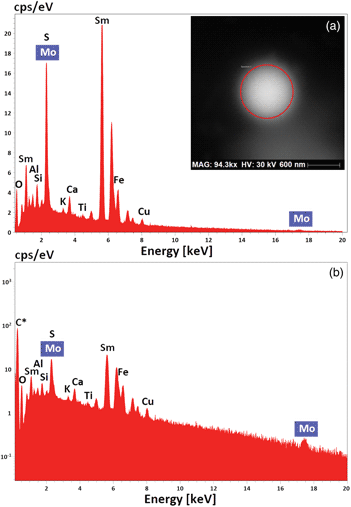Article contents
Molybdenum in Gunshot Residue: Experimental Evidences and Detection Challenges in the Presence of Lead and Sulfur
Published online by Cambridge University Press: 07 May 2021
Abstract

Inorganic gunshot residue (GSR) analysis is carried out by scanning electron microscopy/energy-dispersive X-ray spectroscopy (SEM/EDS) in many forensic laboratories. Characteristic GSR often consists of lead–barium–antimony, commonly associated with sulfur. The strength of forensic GSR evidence increases when unusual elements are found in residues collected both from the suspect and from the discharged firearm. The presence of molybdenum in GSR, due to the use of MoS2 lubricants in firearms, is experimentally demonstrated here for the first time. The most intense molybdenum X-ray emissions are MoL peaks at 2.3 keV which overlap with PbM and SK families due to the poor resolution of EDS detectors. When Pb, S, and Mo are allegedly present in the same particle, the reliability of automatic EDS routines is at risk. Missing identifications or false detections and exclusions may then occur. Molybdenum should be considered as detected only if MoK emissions meet the peak-to-background ratio minimum requirements. A strategy to spot Mo-containing residues is described, based on the automated search of MoS2, using a new “Sulfur only” class added to the classification scheme, followed by careful manual review of all GSR particles at an acceleration voltage of 30 kV. Our proposal improves commonly adopted forensic procedures currently followed in casework.
- Type
- Materials Science Applications
- Information
- Copyright
- Copyright © The Author(s), 2021. Published by Cambridge University Press on behalf of the Microscopy Society of America
References
- 7
- Cited by





